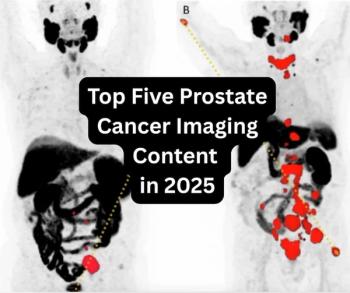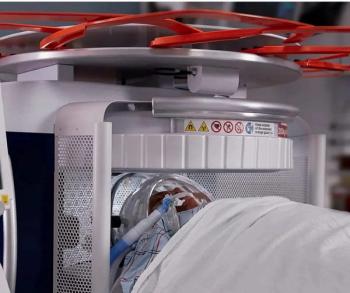
Report from SCMR: Late-enhancement MR predicts susceptibility to future cardiac death
The prognostic value of cardiac MR was a prominent theme last week at the Society for Cardiovascular Magnetic Resonance meeting in San Francisco. Dr. Rishi Kaushal, a CMR researcher at the University of California, Los Angeles, presented results demonstrating that myocardial infarction size measured with cine and delayed-enhancement MR can predict the risk of mortality posed by the injury.
The prognostic value of cardiac MR was a prominent theme last week at the Society for Cardiovascular Magnetic Resonance meeting in San Francisco. Dr. Rishi Kaushal, a CMR researcher at the University of California, Los Angeles, presented results demonstrating that myocardial infarction size measured with cine and delayed-enhancement MR can predict the risk of mortality posed by the injury.
The rationale for Kaushal's study was a paradox in criteria for selecting candidates for an implantable cardioverter defibrillator (ICD). Several studies indicate that patients thought to be at high risk of sudden cardiac death have a higher mortality rate than patients in lower risk groups.
Patients with an ejection fraction between 31% and 40% and unsustained ventricular or inducible tachycardia qualify for an ICD. No clear guidelines for implantation exist for patients with ejection fractions greater than 40%, however, and they account for most of the patients who die suddenly because of their condition, Kaushal said.
Kaushal and colleagues at UCLA and Cedars-Sinai Medical Center in Los Angeles expected that additional clinical criteria would clarify the situation. His study examined whether MI size measured with cine and delayed-enhancement MR gives clinicians an additional indicator regarding who should obtain an ICD.
Kaushal's investigation was based on a study of 100 patients with coronary artery disease. Their mean age was 66 years, and 87% of the group was male. About six of 10 subjects had a previous MI, 23% had diabetes, and 49% were hypertensive. For the study, they were initially imaged with cine and delayed-enhancement MR as part of a routine cardiac examination. The mean left ventricular ejection fraction among the group was 34%.
Kaushal also measured the location and size of the previous MI. Regional wall thickening and contrast enhancement were measured using a 17-segment anatomic model. Viable segments exhibited less than 25% delayed enhancement.
Outcome data collected an average of 25 months later found that 15 subjects had died from cardiac events and another 26 had undergone myocardial revascularization or hospitalization to treat unstable angina or congestive heart failure. DE-MRI found myocardial damage suggesting a previous MI in nine of 10 patients.
Using Cox multivariant analysis, Kaushal determined that an infarction of greater than 15% of left ventricular mass and diminished ejection fraction were the only statistically significant predictors of death. The results led him to conclude that the extent of MI can predict if a patient is susceptible to a death that could be avoided with ICD implantation.
For more information from the Diagnostic Imaging archives:
Newsletter
Stay at the forefront of radiology with the Diagnostic Imaging newsletter, delivering the latest news, clinical insights, and imaging advancements for today’s radiologists.



























